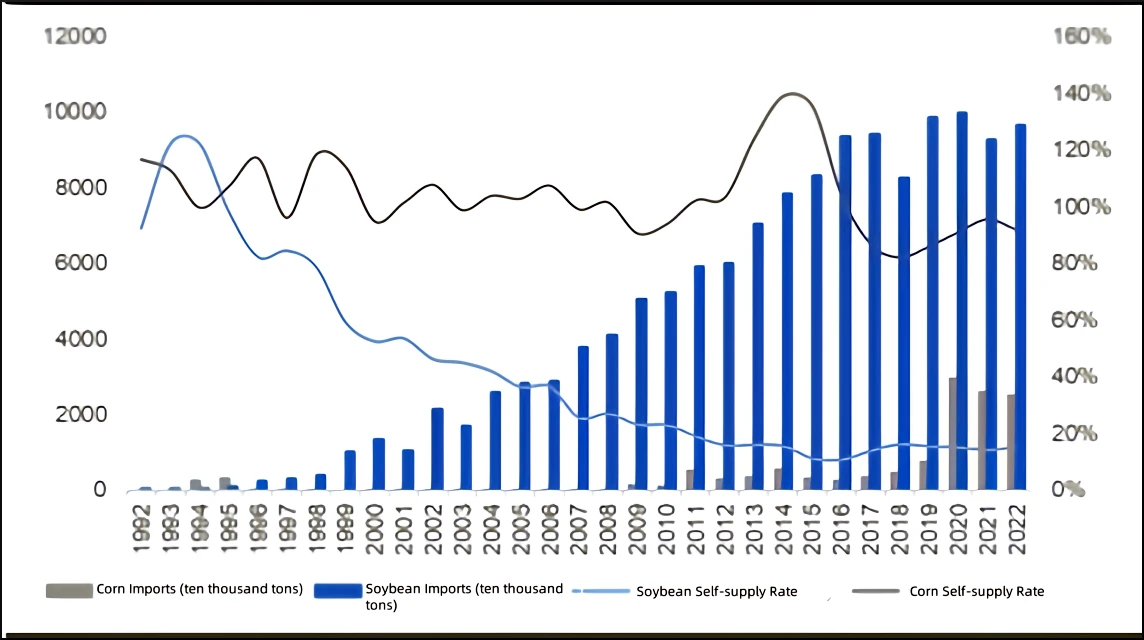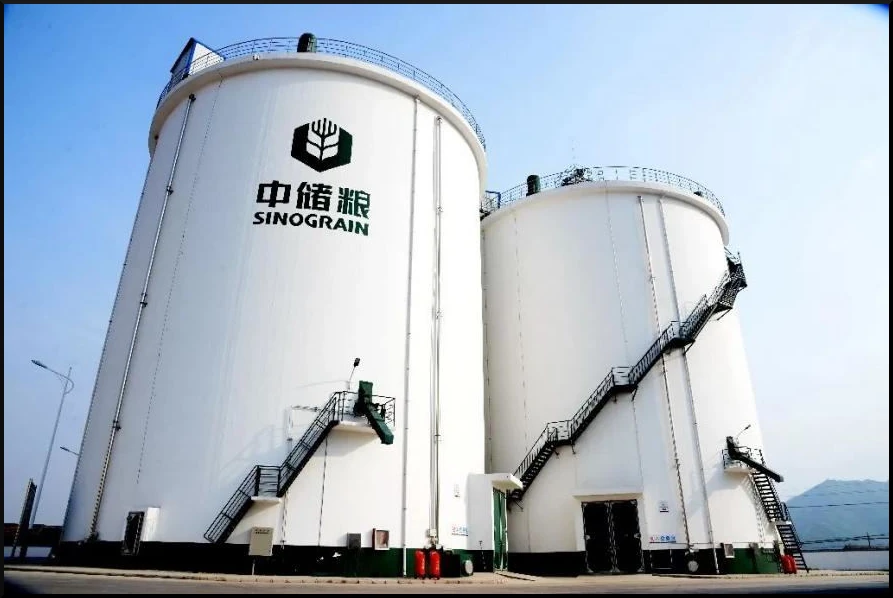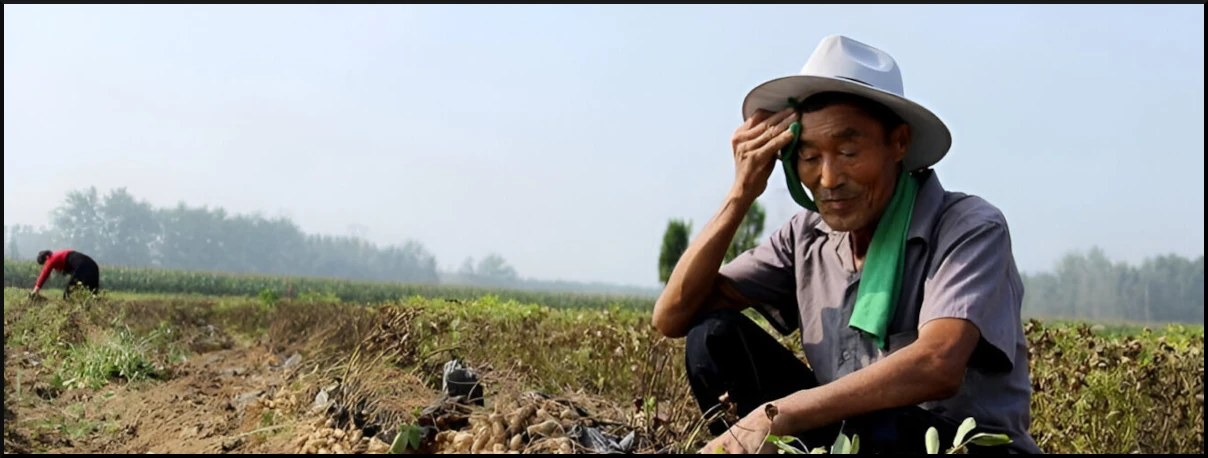from The China Academy, published on the Orinoco Tribune, July 26, 2024
Editor’s note: This article is rather long, but it lays out the aggressive business practices of giant U.S. Corporations, showing how they take over entire global industries and undermine the economies of competitor countries. These practices are used to dominate many resource rich third world countries, but as shown below, they were even able to take down one of China’s largest indigenous industries. [jb]
20 years ago, facing the onslaught of the four global grain giants, China was defeated by the US in the food war, losing its soybean market, resulting in severe dependence on American soybeans. In this piece, the author, a veteran social media influencer focusing on Chinese agricultural affairs, brought an in-depth review of this chapter of history.
There is a famous quote from Henry Kissinger:” Control the Food, control the People.”
In fact, the United States has always implemented this quote. Through the renowned ABCD global grain giants—ADM, BUNGE, Cargill, and France’s LDC—and the financial means of Wall Street, the United States controls 80% of the global grain trade. These companies have established worldwide comprehensive logistics, storage, and futures trading systems. By infiltrating the grain industry of other countries through capital penetration, they repeatedly use food wars to destabilize many countries and extract excessive profits in the process.

What if a country refuses to be controlled by the United States and starts resisting?
In the 1970s, Chilean President Salvador Allende won the election and took office. However, the country was then marked by significant wealth disparity and heavy foreign control. He implemented large-scale nationalization to restore the autonomy of industries. However, his aggressive stance against foreign capital provoked retaliation from the grain traders. Chile, long reliant on U.S. agricultural aid, suddenly found this aid cutoff, leading to severe food shortages and exacerbating internal conflicts. Meanwhile, the U.S. orchestrated a military coup led by General Pinochet. Refusing to surrender to the rebels, the anti-American champion sacrificed his life at last.

In fact, the left-wing anti-American movements that surged in South America during the 1960s and 1970s ultimately failed largely due to the decisive role played by grain wars. Similarly, in the 1990s, the notorious Monsanto and the four grain giants got Argentina’s grain industry nearly bought off. Using the advantage of cheap grain, they forced Argentine soybean plantations to adopt genetically modified soybeans. Domestic seed companies in Argentina then went bankrupt under the impact of these foreign soybeans and were subsequently acquired by Monsanto.
Monsanto then turned its attention to the Argentina family farmers, suddenly demanding patent fees, pushing them to the brink of bankruptcy, and ultimately acquiring them. Finally, 90% of Argentina’s grain industry fell into the hands of American capital.

The basic tactics of the four grain giants can be summarized as follows: dumping (in the name of aiding) low-priced grain in other countries → squeezing the local market with cheap grain and seeds → leveraging financial methods to create price fluctuations that bankrupt local businesses → acquiring these businesses at low prices, thereby gaining control over a country’s grain industry.
The reason why this tactic has been repeatedly successful over the past few decades is that:
• The monoculture and large-scale agricultural production methods, along with North America’s favorable geographic conditions, provide the United States with strong agricultural productivity.
• Wall Street’s financial hegemony allows for control over grain prices.
• U.S. military dominance enables control over global trade routes.
• The legacy of colonial ties and interests in former colonial countries.
The Downfall of Chinese Private Cooking Oil Companies
The Chinese people seem to have no sense of the grain war, but in fact, China has already fought with the ABCD grain traders earlier.
The early decades of the People’s Republic of China were not affected by the food war, mainly because of the strict quota system applied to the food supply at that time. Food markets are not fully open, especially for overseas imports.
In 1974, Monsanto took advantage of the opportunity presented by the normalization of diplomatic relations between China and the United States to steal China’s high-quality soybean germplasm. They then developed new genetically modified soybeans, significantly increasing their domestic soybean production capacity, which is the root cause of Argentina’s grain industry falling under U.S. control.
In the 1980s, China and the United States strengthened cooperation, signed a bilateral food trade agreement, and opened food markets for US imports. Later, to meet the requirements of accession to the WTO, China signed the “Agreement on U.S.- China Agricultural Cooperation ” in 1999 with the US, opening agricultural technology exchanges between the two countries. As a result, barriers to U.S. agriculture in the Chinese market have been removed, arousing American multinational agribusinesses covet.
Furthermore, with the support of high-yield genetically modified soybeans, the United States heavily subsidized its agriculture, drastically reducing the cost of soybean cultivation. At its most extreme, the comprehensive cost of U.S. genetically modified soybeans, including land and sea transportation to China, was still half that of China’s domestic soybeans.
Consequently, under the guise of the so-called free market, U.S. soybeans, with their cost advantage, completely dominated the Chinese market, laying the groundwork for the eventual collapse of China’s entire soybean industry chain.
In August 2003, the U.S. Department of Agriculture suddenly announced that due to weather conditions, U.S. soybean stocks would be adjusted to a historical low, and there would be no increase in production that year. Meanwhile, Wall Street financial giants seized the opportunity to massively stockpile soybeans, driving the price up to a historical high of $532 per ton (compared to the usual price of $278 per ton). This caused panic among Chinese cooking oil manufacturers who heavily relied on U.S. soybean imports. With their supply channels limited and fearing a shortage of raw materials, they formed a group to buy expensive soybeans from the U.S.
Ironically, less than a month after the Chinese cooking oil companies rushed to buy the exorbitantly priced U.S. soybeans, the U.S. Department of Agriculture suddenly announced an increase in soybean production and stock levels. Wall Street then sold off soybeans, causing prices to plummet. To avoid the burden of the high-priced soybeans, most of the Chinese cooking oil companies that had rushed to buy chose to default on their contracts. The four grain giants then seized this opportunity to sue the Chinese cooking oil companies, demanding exorbitant compensation and blocking their supply channels, prohibiting them from purchasing cheap soybeans through imports.
As a result of this chain of events, nearly a thousand Chinese cooking oil companies went bankrupt, leading to widespread devastation. International capital took advantage of the situation to acquire these companies, ultimately gaining control over China’s soybean-related industry chain. Even today, the control of foreign capital over China’s cooking oil industry chain remains significant, with many common brand names in the Chinese market backed by the four grain giants’ capital.
The devastating defeat in the 2003 soybean war led to the downfall of all Chinese private cooking oil companies. Only state-owned enterprises like COFCO and Sinograin survived due to government backing. This defeat resulted in the entire Chinese soybean industry, from upstream cultivation to midstream processing and downstream production, falling under the control of the four grain giants. The most direct consequence was that U.S. genetically modified soybeans entered the Chinese market unimpeded. This further increased China’s dependency on imported soybeans, particularly those from the US.

This battle had a profound impact on the structure of China’s soybean industry. The U.S. continues to influence China’s soybean oil consumption through trade wars and media campaigns, aiming to squeeze out the remaining market share of COFCO and Sinograin.
The Battle for the Sovereignty of Corn and Wheat
The painful loss of independence in the soybean industry made China determined to safeguard its other staple crops, leading to the strengthening of the national grain reserve system. In 2005, the four grain giants tried similar tactics, driving up the prices of corn and wheat. From 2005 to 2008, the prices of corn and wheat on the international market nearly quadrupled. However, this time, they found that corn and wheat prices in China remained remarkably stable, increasing by only 0.7 times.
The reason China’s corn and wheat prices remained steady amidst the turmoil caused by international grain traders is that China utilized its national grain reserves. Sinograin released reserves to stabilize domestic prices, ensuring that China’s corn and wheat markets stayed strong despite the global price surge.
Like the 1998 financial defense battle in Hong Kong, whenever international grain traders bought grain, Sinograin would release reserves accordingly. They started by releasing reserves every ten to fifteen days, then every week, and eventually every couple of days. This seemingly bottomless reserve capacity instilled a deep fear in the four grain giants and their financial backers:
“How much grain does China actually have in its national reserve?”
Unable to gauge the depth of Sinograin’s reserves, the international grain traders were also met with a bold statement by Sinograin on the international market: “China’s grain reserves amount to 100 million tons, enough to feed the entire country for a year. If you dare to speculate on grain prices, first consider whether you can afford it.”
This statement made the four grain giants and their financial backers reconsider their capabilities, ultimately giving up. Sinograin’s formidable reserve capacity thwarted the four grain giants’ conspiracy to buy off China’s corn and wheat sovereignty.

China’s ability to defeat international speculators in 2005 owed much to Sinograin, the cornerstone of the nation’s food security. Since then, the four grain giants and overseas speculators learned a crucial lesson: to destroy China’s food security, they must first dismantle Sinograin and eliminate all state-owned grain enterprises in China.
After being defeated in this round, Western capital remains unwilling to concede, continuing to buy off Chinese public intellectuals and opinion leaders to speak on their behalf. As a result, China’s public opinion arena was filled with voices advocating for the liberalization and privatization of all industries and stigmatizing the public-ownership economy for a long period. Even today, some online influencers are still promoting privatization.
The Battle to Rebuild Home-bred Soybean Industry
After the U.S.-China trade war and the Russia-Ukraine conflict, the Chinese government has repeatedly emphasized the importance of food security. The battle to regain sovereignty in the soybean industry is quietly underway.
Firstly, the Central Government’s No. 1 Document of 2023 explicitly called for the expansion of domestic soybean production. As of 2023, China’s soybean planting area has reached 10466667 hectares, with a production of 20.84 million tons, an increase of 23000 hectares year-on-year. Especially since 2022, following the COVID-19 pandemic, soybean production has shown a steady upward trend, indicating that domestic soybean production in China is gradually taking shape.
To break free from reliance on imported soybean seeds, China has also made significant breakthroughs in soybean breeding in recent years.
For example, the Dongsheng 118, developed by the Northeast Institute of Geography and Agroecology of the Chinese Academy of Sciences, is a soybean variety with excellent salt and alkali resistance, which can yield 3,600 kilograms per hectare even in saline-alkali environments where conventional crops struggle to survive. The “Jiyu 269” variety, developed by the Jilin Academy of Agricultural Sciences, can achieve a yield of 3,900 kilograms per hectare, exceeding the yield of conventional soybean varieties in China by 20%.

In 2024, the Oil Crops Research Institute of the Chinese Academy of Agricultural Sciences achieved the world’s first successful cloning of a rust-resistance gene from soybeans, addressing the global challenge of a lack of rust-resistant genes in soybeans. This breakthrough holds promise for long-term prevention of soybean rust disease.
With the widespread adoption of molecular breeding technology, China’s breeding techniques are now on par with those of the United States. Breakthroughs in related agricultural technologies are progressing steadily, and more competitive soybean seeds are emerging rapidly. This will eventually break the monopoly of U.S. genetically modified soybeans.
At the same time, China is gradually reclaiming its lost soybean industry chain, attempting to open a new market for domestically produced soybeans.
With the triple support of increased production, advanced technology, and a robust industry chain, the sovereignty of China’s soybean industry is growing strong. What’s more, the Belt and Road Initiative is also helping China build more secure food import channels.
Notes:
https://www.guancha.cn/norlanseed/2024_07_17_741699.shtml
